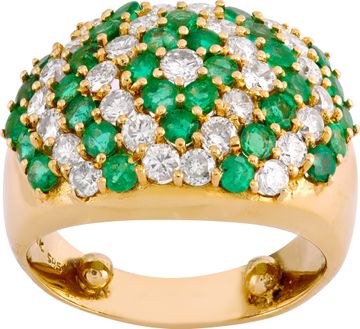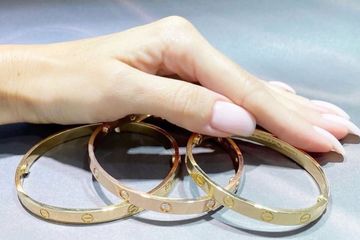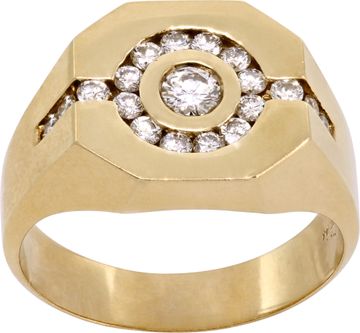Luxury Watch Materials: Comparing Ceramic, Titanium, and Steel
In the world of luxury watches, the materials used are just as important as the craftsmanship behind them. For decades, stainless steel reigned supreme as the go-to case and bracelet material. But modern horology has evolved. Today, collectors are equally drawn to high-tech ceramic and ultra-light titanium, each offering unique aesthetics, performance, and wearability. Whether you’re expanding a collection or seeking a timeless asset, understanding these materials will help you choose the right watch for your needs.
Stainless Steel: The Enduring Classic
Stainless steel is perhaps the most recognized and widely used material in luxury watches. Known for its balance of durability, affordability, and resistance to corrosion, steel has long been favored in tool watches like the Rolex Submariner, Omega Speedmaster, and Audemars Piguet Royal Oak. The most commonly used grades in watchmaking are 316L and 904L steel for stainless steel watch cases. While 316L is known for its anti-corrosive qualities and comfort on the wrist, Rolex popularized the use of 904L steel, which offers a brighter finish and greater resistance to extreme environments. Steel watches are generally heavier than titanium or ceramic models, giving them a reassuring weight that many collectors appreciate. In the pre-owned market, stainless steel watch cases tend to hold strong appeal, especially iconic models with limited production runs. Their ability to develop a subtle patina over time gives them character, often making each gold watch piece unique.
Titanium: Strength Without the Weight
Titanium has grown in popularity among luxury watch brands due to its impressive strength-to-weight ratio as a watch case material. It's approximately 30% lighter than stainless steel but just as durable, if not more so, in certain applications. Used widely in aerospace and high-performance sports gear, titanium is ideal for watch enthusiasts who prioritize comfort without sacrificing resilience. What sets titanium apart, beyond its weight, is its hypoallergenic property and matte-gray finish. The duller tone compared to steel makes it an attractive option for those who prefer an understated look. Its resistance to saltwater corrosion also makes it particularly appealing for divers and adventurers. However, titanium is more prone to surface scratches than steel. Some manufacturers apply special coatings, like Citizen’s Duratect or Omega’s Grade 5 titanium alloy, to enhance scratch resistance. In the pre-owned space, titanium watches are highly regarded for their innovation and are often associated with aviation or ultra-light sports timepieces.
Ceramic: High-Tech Aesthetics and Scratch Resistance
Ceramic has emerged as a favorite for collectors who desire modern styling with cutting-edge performance in watch cases. Made by sintering powdered materials at high temperatures, ceramic used in watches is incredibly hard—nearly four times harder than stainless steel—and virtually scratchproof. Unlike steel or titanium, ceramic doesn’t show signs of aging in the same way. Its surface doesn’t oxidize, it won’t corrode, and it maintains its glossy or matte finish for years. This makes ceramic an excellent choice for a pre-owned luxury asset that remains in near-mint condition for much longer than its metal counterparts. On the downside, ceramic can be brittle if subjected to a hard impact. While scratches are nearly impossible on ceramic watch cases, shattering or chipping is possible under extreme stress. Despite this, ceramic watch cases from brands like Hublot, Omega, and Audemars Piguet have become highly desirable for their futuristic look and unique feel on the wrist.
Comparing Weight and Comfort
When comparing the three materials purely by weight, titanium clearly comes out on top as the lightest. This can make a big difference during extended wear, especially for larger watch case sizes. Ceramic is also relatively light, though often a bit heavier than titanium, depending on the specific formulation and case design. Stainless steel, while sturdy and reassuringly heavy, can feel cumbersome on larger watches or on wrists that prefer lighter wear. Collectors often choose titanium for daily wear or active use, while ceramic is favored for its futuristic look and comfort. Stainless steel, while heavier, remains the go-to for those who appreciate tradition and robustness.
Durability and Longevity
All three materials offer durability, but they do so in different ways. Stainless steel is tough and resistant to dings, but it will scratch over time. Titanium offers excellent corrosion resistance and overall toughness, but is easier to scratch without protective coatings. Ceramic, while extremely hard and nearly impossible to scratch, can be more fragile when dropped or hit with force, presenting a disadvantage in some situations. In a pre-owned collection, stainless steel watches often show signs of wear, which some collectors enjoy as a sign of character. Titanium may develop a soft brushed patina, and ceramic, if well cared for, can look almost new even after years of wear.
Appearance and Finish
Each material offers its own aesthetic charm. Stainless steel has a mirror-like polish or brushed look that plays well with light. It’s versatile and works across both dress and sport watches. Titanium usually has a matte gray finish that is less reflective and feels more tool-like, making it a popular watch case material. Ceramic comes in a range of finishes—glossy, matte, or even textured—with options in black, white, blue, and other bold colors. For collectors who view watches as assets with visual impact, ceramic provides the most modern and customizable options. Titanium’s tech-driven appeal suits minimalist or performance-focused designs. Steel, meanwhile, is the timeless choice for those who appreciate classic style and versatility.
Price and Market Value in Pre-Owned Collections
When it comes to pricing in the pre-owned market, stainless steel generally offers the most affordable entry into luxury watches, though this varies significantly by brand and model, making it an informed decision for buyers. Titanium watches are often slightly more expensive due to their advanced manufacturing and niche appeal. Ceramic watches, depending on complexity and brand, can command premium prices, especially when combined with high-end movements or limited production. From an asset perspective, ceramic and titanium watches tend to retain their like-new appearance longer, while stainless steel offers historical collectability, especially in iconic references. Limited edition steel models or discontinued titanium variants can become extremely desirable on the secondary market.
Choosing the Right Material for You
Ultimately, the decision between ceramic, titanium, and steel comes down to personal preference and intended use. For classic styling and robust feel, stainless steel remains unbeatable as a watch case material. If comfort and weight are key, titanium is an ideal choice among watch case materials. For those seeking cutting-edge style with exceptional surface longevity, ceramic watch cases deliver on all fronts. Each material has its place in a well-rounded luxury collection. By understanding their strengths, wearers can confidently acquire timepieces that match their lifestyle, taste, and long-term collecting goals.
Conclusion
As luxury watchmaking continues to push the boundaries of technology and design, the materials used in crafting these masterpieces matter more than ever. Whether your next timepiece is a pre-owned ceramic Hublot, a titanium IWC, or a classic stainless steel Rolex, each material offers something unique. In today’s market, where every acquisition is a potential asset, knowing your watch case materials helps you make the right choice, not just for today, but for the years of enjoyment to come.
Where to Sell your Luxury Watch
If you're interested in selling, consigning, or trading in any of your luxury pieces, our online buying platform, SellUsYourJewelry, is here to help. As a reputable buyer of fine jewelry and high-end watches, we provide a seamless, transparent, and fair process to sell any of your pieces. Visit our website or reach out today to discover how you can confidently sell your luxury piece.
Discover Exquisite Pre-owned Luxury Watches and Jewelry: New Arrivals for June 12, 2025
NEXT ARTICLE
Navigating Summer 2025 Adventures: GMT Watches as Essential Travel Companions










